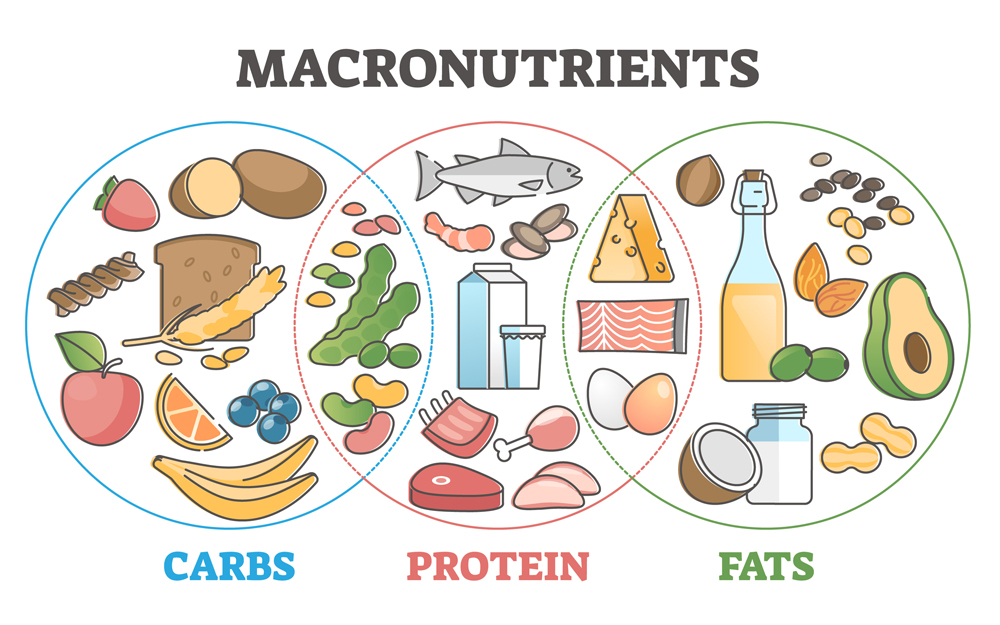Know Your Macros: Why Macronutrients Are Key to Healthy Eating
Date
January 21, 2022
Credits

Date
January 21, 2022
Credits
Medical providers featured in this article
In Brief
{{cta-block}}
Many people vow to lose weight or eat healthier at the start of a new year.
Before you begin a new diet or change your eating habits, it's important to understand macronutrients and how they affect your body.
"Calories are important for weight loss, but understanding macronutrients will help you stay on track and achieve long-term weight loss."
What are macronutrients?
Counting your macros has become a diet trend in recent years, says Albert Abayev, registered dietitian at Cedars-Sinai.
"Macros" is short for macronutrients, a term used to describe the nutrients your body needs in large amounts, specifically carbohydrates, fat and protein.
"Macronutrients are basically what your body runs on," Albert says. "You want your diet to have a balance of carbs, fat and protein."
Carbohydrates give your body energy, while protein helps rebuild and repair your body's tissues. Fat is important for satiety, or feeling full, hormone balance and helping your body absorb certain vitamins such as vitamins A, D, E and K.
Should you count macros?
If you want to lose weight, Albert suggests counting or tracking your macronutrients for a short period of time to understand where your calories are coming from.
"A lot of people don't know the macronutrient content of their food," Albert says. "If you're eating 2,000-2,500 calories per day, but most of these calories are coming from simple carbs, then you're more likely to gain weight."
Simple carbohydrates, found in foods like baked goods and white bread, are digested quickly, which can give you a sugar rush but then leave you feeling fatigued. Complex carbohydrates, such as whole grains and fiber-rich vegetables, are digested more slowly.
Each macronutrient plays a role in keeping your body full and satisfied, which helps to prevent overeating, reduces cravings and enables you to lose weight.
"Calories are important for weight loss, but understanding macronutrients will help you stay on track and achieve long-term weight loss," Albert says.
How to determine your macronutrient ratio
As a general rule, Albert advises a macronutrient breakdown of 20%-30% fat, 30% protein and 40%-50% carbohydrates.
"Focus on getting healthy fats from things like nuts, seeds, olive oil, salmon, and avocados," Albert says. "Keep portion control in mind, because fats are higher in calories. A little bit of healthy fat goes a long way."
He also suggests using an online macronutrient calculator to get an idea of how many grams of protein, carbohydrates and fat you should be getting per day based on your caloric needs. These guidelines may vary depending on your weight, height, age, activity levels and weekly weight-loss goals.
"Ideally for weight loss, you want to have consistent meals throughout the day that focus on all three macronutrients per meal," Albert says.
Checking nutrition labels
When looking at nutrition labels, pay attention to how much protein and sugar the product contains per serving.
"The grams of protein in a food product should always be higher than the number of grams of sugar or total sugar," Albert says. "If there is more sugar than protein, this will tell you that the food mostly consists of sugar, like a box of cereal or fruit juice. This helps you pick better brands and understand which foods are actually a healthier choice."
For example, depending on the brand, one container of Greek yogurt could contain 15 grams of protein and 21 grams of sugar. Another container could contain 15 grams of protein and 6 grams of sugar.
"You want the food products you buy to contain less than 8 grams of sugar per serving," Albert says. "Sugar is one reason people gain weight, because some foods are advertised as healthy but have hidden sugars."
Food products that are high in sugar and low in protein and fiber tend to digest in your body more quickly, which can leave you feeling hungrier and increase your cravings.
"Look at the protein and sugar content on the nutrition label: Are the grams of protein higher than the grams of total sugar? Are there 8 grams or less per serving?" Albert says. "If yes, then that's considered a good option and a healthier choice.”
Eating a balanced diet
While changing your diet and losing weight can be a challenge, learning about macronutrients is key.
"Diets usually don't work because the mentality we have is that a diet is something we're going to do for a short period of time, and then once we achieve our goals, we can go back to eating the way we want," Albert says.
"Maintaining weight loss long-term is all about balance. Make sure that your meals include a combination of protein, carbs and fat, and avoid skipping meals. This can help you begin to lose weight and not feel as hungry as you did before."
In Cedars-Sinai Magazine: How to Shop for Fun, Healthy Family Meals





